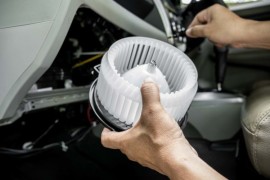{
"lazyNodes": false,
"abFitnotesFlag": false,
"abCrawlReviews": false,
"productOptionsCookie": false,
"orderDelayFlag": false,
"skipSessionCookie": false,
"covidMessage": false,
"fullTitleCookie": false,
"nrLoggerCookie": false,
"checkoutReviewCookie": false,
"productOptionSeqCookie": false,
"maintenanceFlag": false,
"bufferETACookie": false,
"multiShippingDiscountFlag": false,
"newFitmentFlag": false,
"surveyOptInFlag": false,
"crossSellFlag": false,
"skuMappingFlag": false,
"paySplitCookie": false,
"callDisableFlag": false,
"zipPaymentFlag": "u",
"hassleFreeReturn": false,
"lifetimeReplacement": false,
"cpn_off": false
}1992 Mercedes Benz 600SEL Blower Motor Resistors
Shop Catalog
- 1992 Mercedes Benz 600SEL Base 12 Cyl 6.0L
![]() WARNING: This product can expose you to chemicals including Lead, which is known to the State of California to cause cancer and birth defects or other reproductive harm. For more information go to www.P65Warnings.ca.gov.
WARNING: This product can expose you to chemicals including Lead, which is known to the State of California to cause cancer and birth defects or other reproductive harm. For more information go to www.P65Warnings.ca.gov.
- 1992 Mercedes Benz 600SEL Base 12 Cyl 6.0L Blower Motor Resistor
![]() WARNING: This product can expose you to chemical which is known to the State of California to cause cancer and birth defects or other reproductive harm. For more information go to www.P65Warnings.ca.gov.
WARNING: This product can expose you to chemical which is known to the State of California to cause cancer and birth defects or other reproductive harm. For more information go to www.P65Warnings.ca.gov.
Popular Products

GPD OE REPLACEMENT BLOWER MOTOR RESISTOR
Meticulously engineered to meet OE quality and performance standards, GPD’s OE replacement blower motor resistor provides a reliable, budget-friendly solution that’ll restore optimum cooling performan...

Manufactured from top quality components, this is your best option and inexpensive replacement for your rebuild, repair, and maintenance needs - an OE replacement product for your damaged or aged factory part.
Replacement - the most affordable brand name for replacement parts th...









